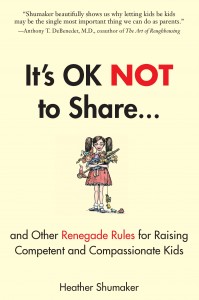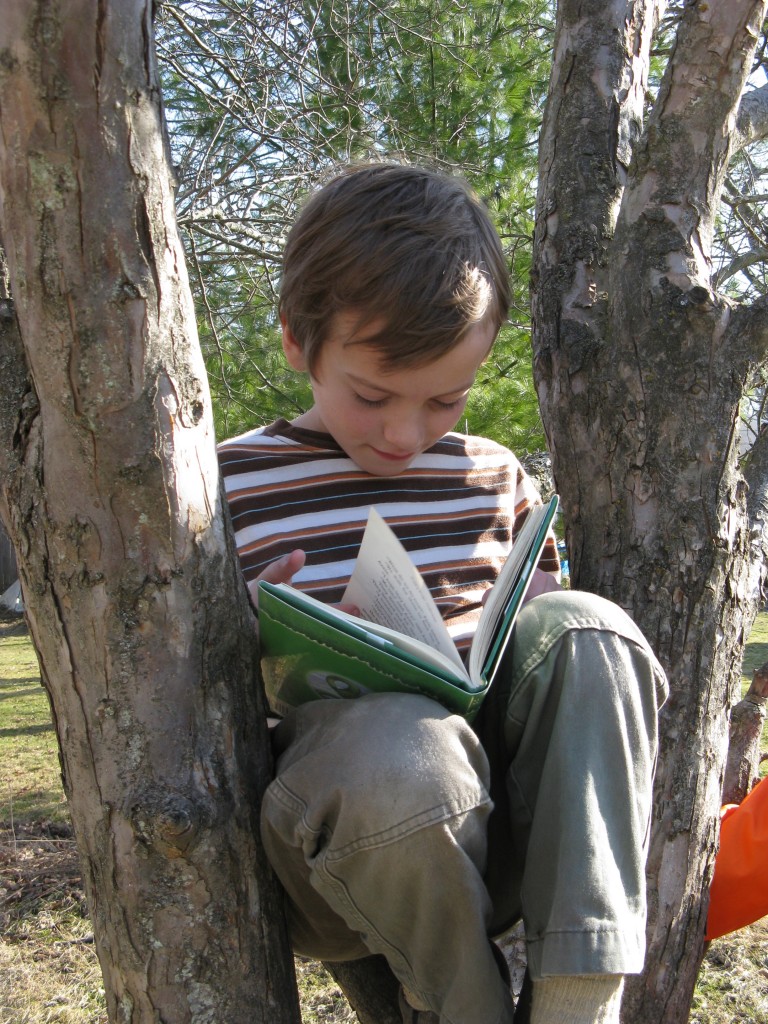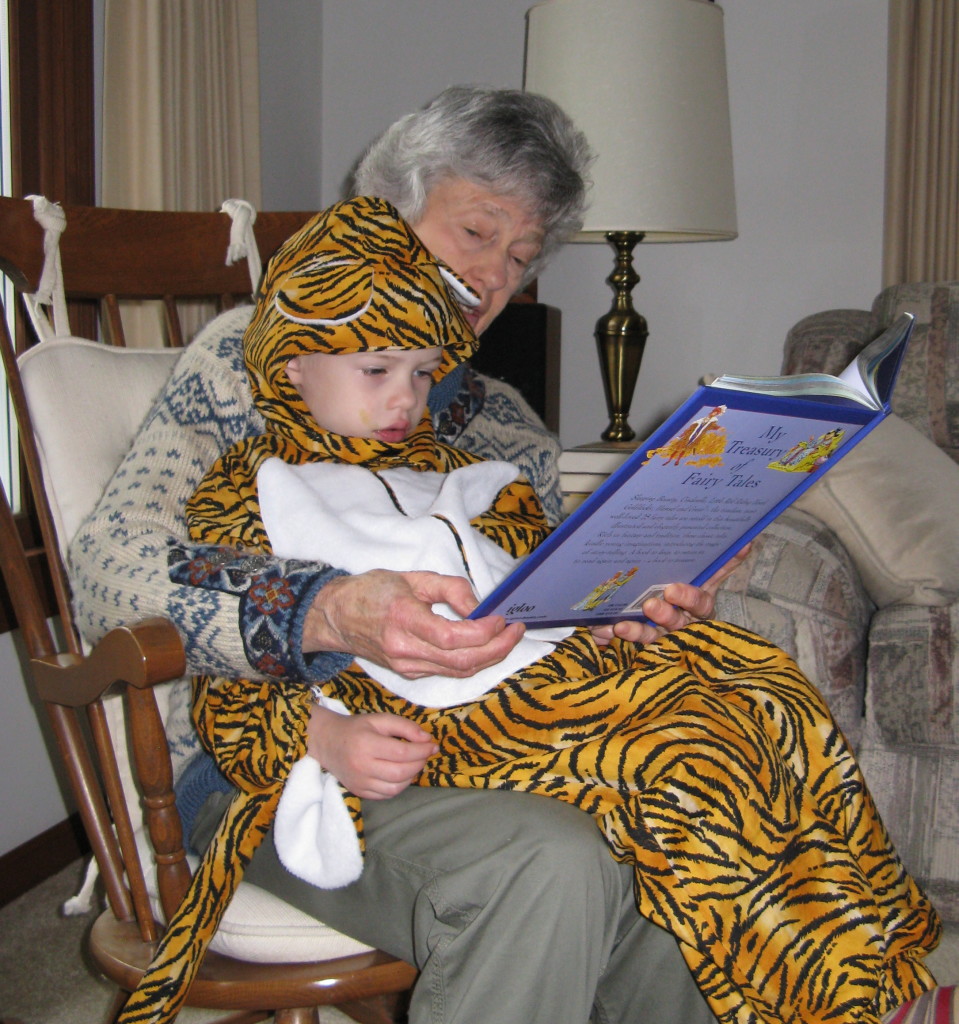A World of Books and Children
Search and enjoy 8 years of posts chock-filled with ideas from It’s OK Not to Share and beyond.
Writers of children's books have always struggled with a challenge: how to get rid of the parents.
Have you ever noticed how many children's books feature orphans? Now authors have a new layer of challenge: how to get rid of cell phones and other technology tethers. How can a child have an adventure when she is too supervised?
Unsupervised time and space is rare these days, but that's where so much growing, learning and discovery takes place. And yes, misadventure. Kids need ample misadventures to understand the world and its thorny side, too. That's why authors try every trick they know to get kids to stand alone, without parents or cell phones beside them to prop them up.
It's hard to think of a children's book where the parents have a main role. Children are either orphans or are whisked away to a magic land. Kids in Narnia are wartime evacuees. Kids in The Penderwicks have a mother who's dead and a father who is absent-minded. Some children are given surrogate parents - Charlie gets Grandpa Joe in Charlie and the Chocolate Factory - since aunts and grandparents tend to allow kids greater freedom. As for technology, authors throw cell phones from trains, drain batteries and resort to time travel to eliminate that crutch.
Kids desperately need unsupervised time in real life. Time to play where parents can't see them. Time to talk to friends without adults listening. As they grow, kids need an ever-expanding range of unsupervised space. For young kids, this means playing alone in the next room or in the front yard. For older kids, the range may be the neighborhood block or local park. Soon it means the town.
Technology extends the parental reach into children's private time. Their movements and very conversations are tracked. They are expected to be "on call" to their parents night and day. Besides being obtrusive, this constant attachment can stunt kids. Each generation needs time to figure things out, make mistakes, get a bit lost, and rely on themselves to sort out problems.
That's hard when adult help is hovering, only a phone call away. Kids need to rely on their own resources. Their first instinct should be: what can I do? Not: Dad! Mom! Besides, it's safer, too.
When we put risk and safety into children's hands, they tend to perform less risky behaviors. Research from Adventure playgrounds shows that accidents go down when kids are allowed to take risks in their play. They learn to make choices. Learn to judge risks and evaluate their limits.
Adventure should not just be for storybook characters. Where can you add some degree of adventure to children's lives?
What level of adventure and non-supervision are you comfortable with? Are you letting your child do things you did at the same age? Is there any training you need to do first before letting her explore?
More on RISK and its many benefits in childhood in the sequel to It's OK Not to Share, coming in March 2016.
If you've read my "No Homework" post, you know that our family has banned homework for our elementary school-aged kids for several years. Is homework for kids K-6th grade ever OK?
Yes. There is such a thing as "Happy Homework." But it's exceedingly rare.
In fact, being rare is the first element of happy homework. It's not appropriate to be daily, weekly or even monthly. For young children to gain from a home assignment, the project needs to be very once-in-awhile. Once a semester rare. Maybe 1-3 times a school year.
Remember, the purpose of homework is gain. Gaining knowledge and confidence. Gaining a connection between home and school. Most of all, gaining a deeper love of learning.
Research on homework's impact is clear: there's no academic benefit to doing homework for elementary-aged children. Equally clear: homework sours children's interest in school. It's a lose-lose situation. As educator Alfie Kohn says, "All pain, no gain."
We've switched to a school that largely agrees with this philosophy. Recently my first grader was invited to do a project on a favorite book. He built a cardboard drum happily. This met the definition of "happy homework" for our family. It was rare (twice a year), age-appropriate (he could do all the work), project-based, optional, and, most importantly, deepened his love for school rather than hurt it. He couldn't wait to show it to his classmates.
More and more wise teachers are rethinking traditional homework. New York City made news this week when a courageous, principled principal banned it in her elementary school, P.S. 116.
Happy homework for elementary-aged kids is possible, but few schools get it right. Here's what it looks like -
- It's joyous
- It’s optional
- It’s occasional (1-3 times a year; once a term).
- It’s independent. Children can do the entire assignment on their own.
- It's age-appropriate.
- It promotes greater love of school and learning.
- It's project-based OR reading for pleasure (reading for pleasure can be daily, as long as it's being read to, or truly for pleasure)
Worthwhile homework makes children more excited about a topic than before. Worthwhile homework makes children more excited about reading and school, not less. Why do it at all if it's not worthwhile?
What else do you think makes "happy homework" for kids? Is homework at your child's school optional? Is there talk about banning traditional homework in your area?
 Interested in homework issues?
Interested in homework issues?
Read more in my upcoming book IT'S OK TO GO UP THE SLIDE, soon to be published by Tarcher/ Penguin.
Currently available: IT'S OK NOT TO SHARE: And Other Renegade Rules for Raising Competent and Compassionate Kids.
My first child learned to read early. Soon after, he announced, "I don't need bedtime stories anymore. I can read by myself." He made the same mistake many adults make: that reading aloud is only for the very young.
Reading aloud can be a crucial part of parenting - and you're never too old. My mother read to me all the way through high school. I read bedtime stories to both my children. One is heading to middle school next year; he's not too old. Reading aloud is a beautiful way to share the world, and it gives kids a second level of literacy.
Children can read at one level. They can comprehend story and grasp vocabulary at a much higher level when being read to. Both are needed to get excited about books.
Being read to is a lovely and loving experience. My husband and I read to each other while courting. My parents still read books to each other after 50 years of marriage. At family get togethers, my children listen while grandpa reads them story poems. I hope they'll always remember his resonant voice and love of language. You're never too old to be read a story.
Reasons to celebrate reading aloud -
Joy and interest - Learning to read can be hard work. Reading aloud keeps stories pleasurable. Kids who are working hard to master reading crave stories beyond "The bug is on the rug." They also love stories with much more complex characters and plot than simple readers offer. Reading aloud lets kids fall in love with books at their listening age, not their reading level.
Expanding literacy - Together you can decipher the vocabulary in Robert Louis Stevenson's Treasure Island. The learning level kids can handle when being read to is far higher than what they can read on their own. Five-year-olds can glory in complex story and vocabulary. Sometimes the rhythm of the words alone excites them. For teens, try reading a difficult-to-get-into book for the first few chapters until they get into the story and take off on their own.
Introduce new books - Kids love series partly because they feel comfortable with a cast of familiar characters. Rereading old favorites is wonderful, but reading aloud lets you introduce your child to new favorites. One good way is to read the first book in a series together, then let your reader explore the rest of the series on her own.
Complex topics - Reading aloud lets you introduce topics like facing death (Tuck Everlasting) and injustice (Bud, not Buddy). If you don't know which books to choose, ask a children's librarian. There are books on all sorts of tough topics.
Supplementing school - Schools fit in a lot, but they can't cover everything. Reading aloud lets you add to your child's world, say by reading a children's version of the Hindu epic of the Ramayana.
Closeness - You loved snuggling with your preschooler on your lap as you shared a good book. Reading aloud to your 10-year-old or teen lets this closeness keep going.
There's no upper age limit for reading aloud. It's not just for children and not just for picture books and early chapter books. Reading aloud can last a lifetime.
Have you stopped reading to your children? Do you read aloud to anyone in your life? What age were you read to as a child?



